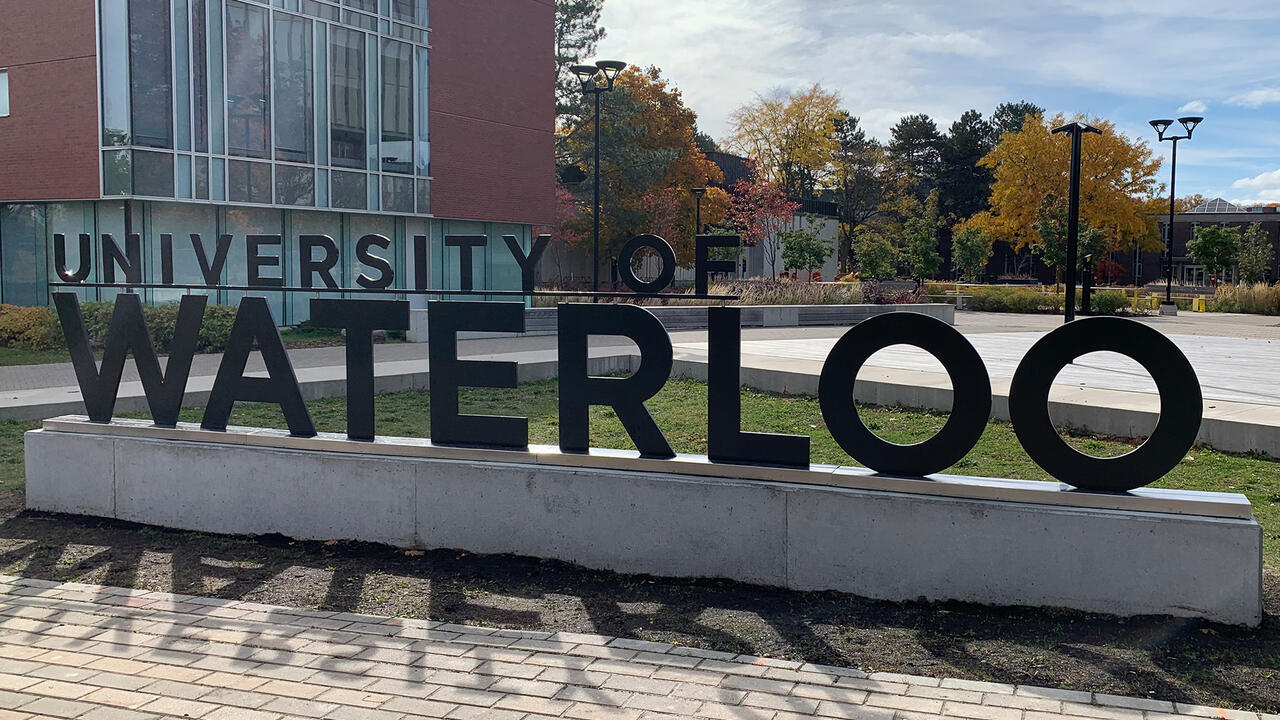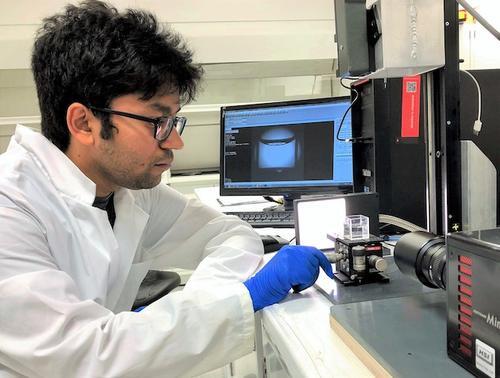
New way to wrap liquid drops could improve drug delivery
Researchers have developed a faster, cheaper way to coat liquid medication, an invention that could improve how drugs are delivered in the body

Researchers have developed a faster, cheaper way to coat liquid medication, an invention that could improve how drugs are delivered in the body
By Media RelationsResearchers have developed a faster, cheaper way to coat liquid medication, an invention that could improve how drugs are delivered in the body.
The new encapsulation technology, developed by engineers at the University of Waterloo, uses gravity and other natural forces to wrap drops as they fall through a thin layer of liquid shell floating on a base liquid.
Once hardened, or cured, by exposure to ultraviolet light, the shell houses and protects the liquid core inside.
“It is a very simple technique that requires almost no energy – and it is extremely rapid,” said Sushanta Mitra, executive director of the Waterloo Institute for Nanotechnology. “Encapsulation takes place in milliseconds.”

PhD student Sirshendu Misra, lead researcher on the development of new encapsulation technology, working in the Micro Nano-Scale Transport Lab at the University of Waterloo. PHOTO: BRIAN CALDWELL
When the liquid core is required – after reaching a particular area of the body for targeted drug delivery, for instance – the shell is designed to dissolve and release its contents.
Mitra said the system’s simplicity enables much more economical production of capsules than current methods, which include machines that wrap drops with thin gel sheets and complex microfluidic processes.
“We envision a very simple, rapid, mass-production system using syringes,” said Mitra, a professor of mechanical and mechatronics engineering who is cross-appointed in chemical engineering and physics and astronomy. “With a one-shot approach, you could produce thousands of these encapsulations.”
Other advantages of the technology include the ability to coat drops with multiple layers, greater flexibility in terms of drop volume and shell materials, and the production of stronger, more stable capsules.
In addition to the targeted delivery of pharmaceuticals and vitamins, potential uses for the liquid-liquid wrapping method include the production of tiny capsules to add flavours to cola drinks as they’re being consumed and prolonging the shelf life of cosmetic creams containing collagen.
Mitra supervised the research involving engineering graduate students Sirshendu Misra and Kumari Trinavee, and postdoctoral fellow Naga Siva Kumar Gunda.
A paper on their work, Encapsulation with an interfacial liquid layer: Robust and efficient liquid-liquid wrapping, appears in the Journal of Colloid and Interface Science.

Read more
Velocity pitch competition winners share exciting startup ideas using artificial intelligence and deep tech, showcasing creativity and entrepreneurial prowess

(Getty Images/Meggj)
Read more
Study examined effect of rising temperatures on California’s crop

Read more
Distinguished Waterloo historian and Holocaust expert helps correct the total death toll on an English Channel Island
The University of Waterloo acknowledges that much of our work takes place on the traditional territory of the Neutral, Anishinaabeg, and Haudenosaunee peoples. Our main campus is situated on the Haldimand Tract, the land granted to the Six Nations that includes six miles on each side of the Grand River. Our active work toward reconciliation takes place across our campuses through research, learning, teaching, and community building, and is co-ordinated within the Office of Indigenous Relations.